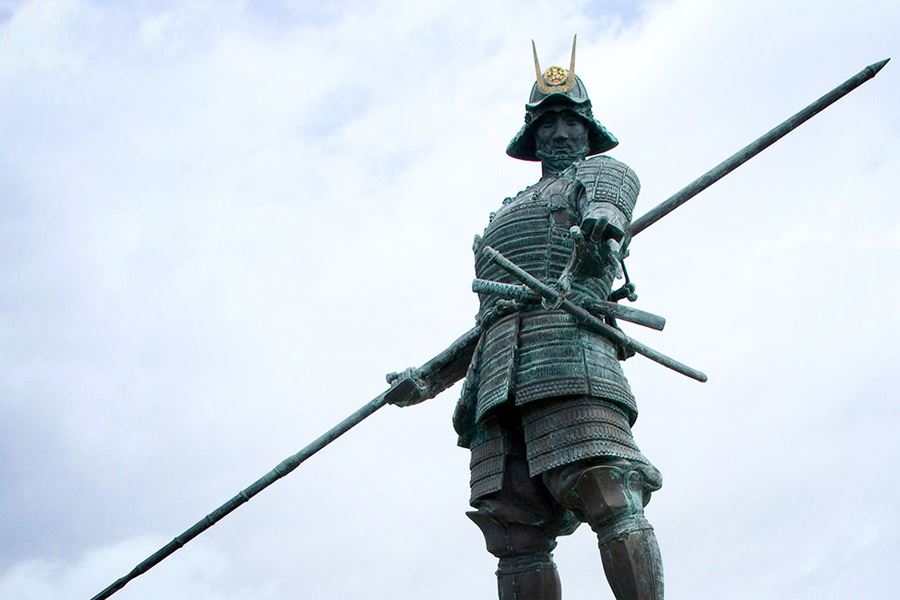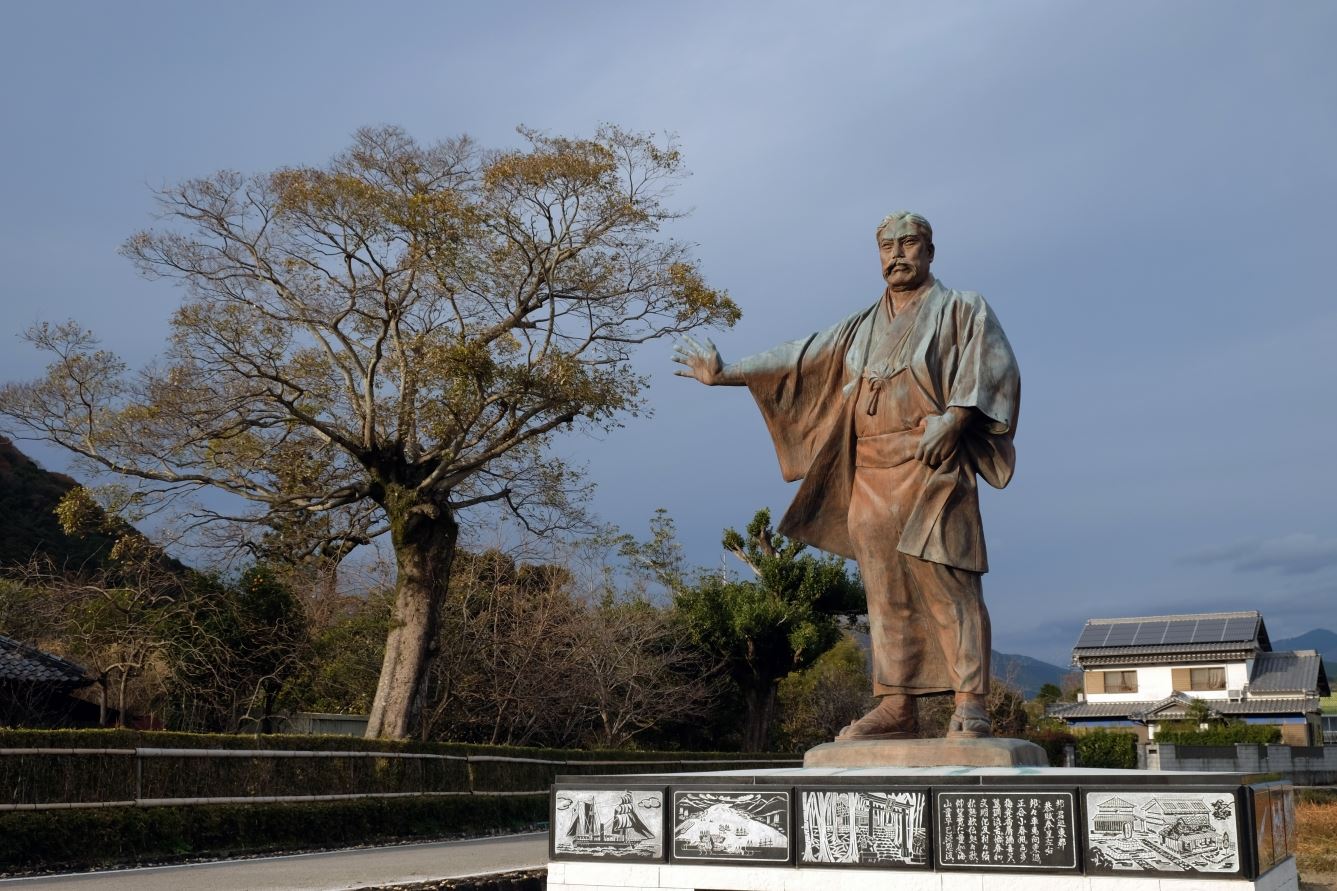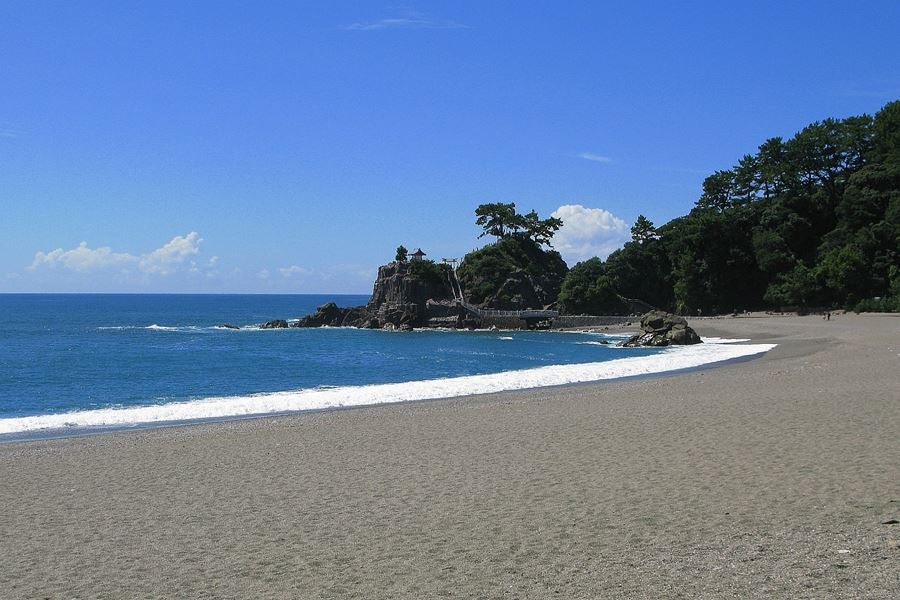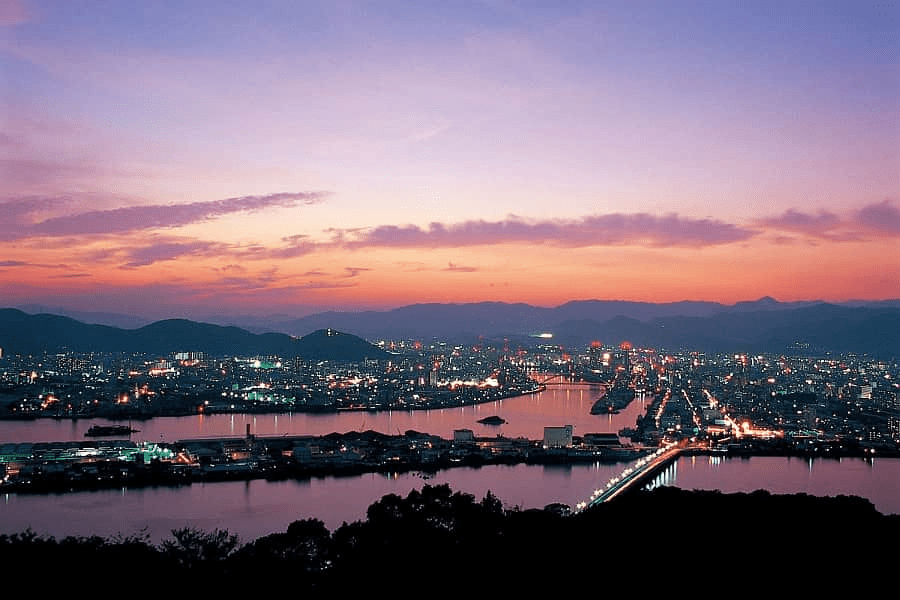Sakamoto Ryōma
Home » Sakamoto Ryōma
Sakamoto Ryōma
Name In Japanese : 坂本竜馬
Pronunciation : sakamoto ryōma
Period : 1836 to 1867
Sakamoto Ryōma of Kōchi is one of Shikoku’s authentic heroes. He played a highly influential role at a key episode in Japan’s history, prompting the overthrow of the Tokugawa shōgunate. Ryōma, was a swordsman, a sailor, a statesman, a philosopher, and a businessman.
Ryōma was born in 1836 in Kōchi city, part of the Tosa domain. His family were originally sake brewers with enough money to buy themselves the rank of the lowest samurai. But Tosa was very conservative, and opportunities for low-ranking samurai were severely restricted, irrespective of individual merit. Even after three generations, the Sakamoto family was going nowhere.
From the age of twelve, Ryōma went to private school, but was a poor student. From fourteen, he took lessons in swordsmanship, and in 1853 his clan gave permission for him to go to Edo to join a renowned dōjō where he excelled, becoming a teacher himself. That same year, Commodore Perry of the United States arrived with a fleet of ships to force Japan out of its policy of isolation, precipitating Japan into a constitutional and security crisis after centuries of relative stability.
This crisis persisted until the restoration of power by the Shōgun to the Emperor in 1868, ushering in the change from the Edo to the Meiji period. Ryōma was murdered by the Shōgun’s allies in 1867, one year before the Meiji Restoration, but in the intervening period, he bent every effort towards the peaceful transition towards a more equitable Japanese society.
Ryōma returned to Tosa in 1858 and in 1862 he joined the Tosa Loyalist Party, a militant organisation of some 2,000 lower-ranking samurai demanding reform of the Tosa government under the slogan “Revere the Emperor, Expel the Barbarians”. Finding this organisation too parochial in its aims, Ryōma resolved to leave Tosa and promote revolution more widely. This was a momentous decision since nobody was permitted to leave their clan without permission, on penalty of death. Thenceforward, Ryōma became a masterless samurai or rōnin, using the alias Saitani Umetarō.
At that time Katsu Kaishū, a charismatic and high-ranking vassal of the Tokugawa shōgunate, was promoting modernization and westernization from within the government to ensure the survival of Japan in the face of imperial encroachment by western nations. Angered by his loyalty to the hated Tokugawa, Ryōma resolved to assassinate him. However, Kaishū persuaded Ryōma of the necessity of a long-term plan to increase Japan’s military strength, and Ryōma began working as his assistant and protégé.
The Tokugawa began to pursue its enemies more ruthlessly, so in 1864, Ryōma fled to Kagoshima in Satsuma Domain, where anti-Tokugawa sentiment was growing. As the first of his major achievements, Ryōma negotiated a secret alliance between the Chōshū and Satsuma clans, historically irreconcilable enemies. As a disinterested outsider, Ryōma was able to bridge the gap between the two parties.
Katsu Kaishū, as a loyal retainer to the Tokugawa, wanted to work with the western powers to create a modern navy that could ultimately protect Japan from those same powers. Ryōma assisted him with the ulterior motive of establishing a force that could allow Satsuma and Chōshū to defeat the naval forces of the Tokugawa shōgunate. With help of Satsuma, Ryōma founded Kameyama Shachū, a private navy and trading company based in Nagasaki. This fleet was later named Kaientai or Ocean Support Fleet, and ultimately it became the basis of the Japanese Imperial Navy.
The Tokugawa army sought to punish Chōshū for its provocations against the Western navies, but the Chōshū defeated the shōgunate in 1866, hurting the Edo government’s prestige. With the Tokugawa on the verge of collapse, Ryōma was no longer regarded as a vagabond by his domain and was invited back to Tosa, whose lord wanted him to negotiate a settlement between the Shōgun and the Emperor that would result in a peaceful transfer of power, without further conflict between the domains. Ryōma played a crucial role in the negotiations that led to the resignation of the Shōgun Tokugawa Yoshinobu in 1867, enabling the restoration of power to the Emperor Meiji.
In the same year, 1867, Ryōma was attacked by supporters of the Tokugawa on December 10 at the Ōmiya inn in Kyōto. Caught unprepared, he was grievously wounded and died that night. He was 31. Despite the accession of the Emperor to power, Japan was still roiled by disunity and factionalism, and Tokugawa loyalists were able to settle scores with their adversaries.
Ryōma was a student of western government and democracy, and his Eight Proposals While Shipboard, a record of his discussions concerning a parliamentary legislature, formed the basis of Japanese democratic government.
Several photos of Ryōma exist. He’s shown wearing traditional Japanese garments, but with leather boots which he preferred to Japanese footwear. In the various shots, he has both short and long swords. He was also known to own and carry a revolver, which isn’t shown. Some say that in his personal life, Ryōma was uncouth, burping and farting in public. But these stories are told principally by the people of Nagoya, originally the home of the Tokugawa.
Related Tours

Experience the most beautiful and interesting temples of the Shikoku Pilgrimage in seven days.

A tour for families or friends, staying in the most characterful kominka and ryokan of Shikoku.

Visit the most beautiful and interesting temples of the Shikoku Pilgrimage and walk the toughest trails.




